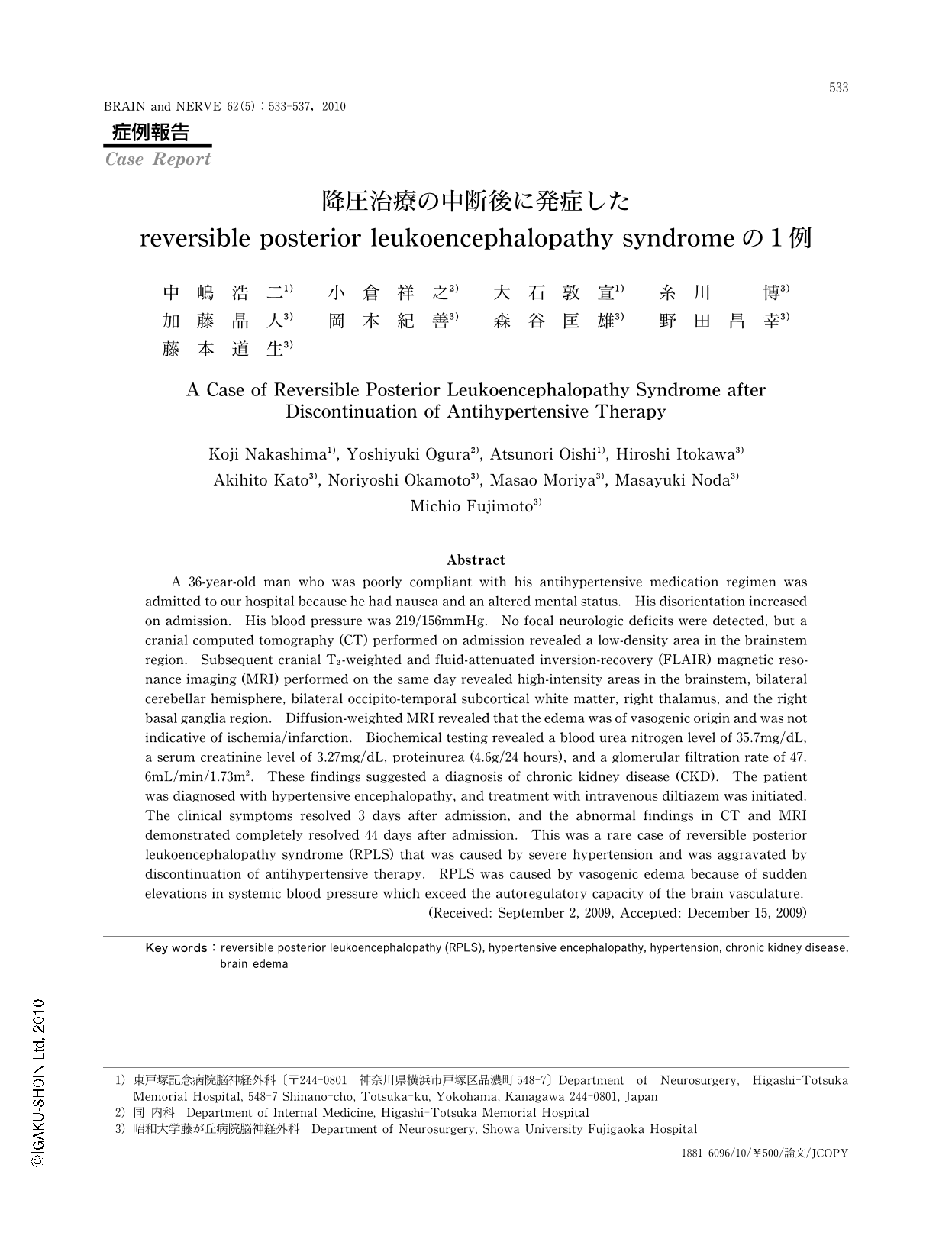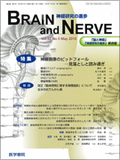Japanese
English
- 有料閲覧
- Abstract 文献概要
- 1ページ目 Look Inside
- 参考文献 Reference
はじめに
Reversible posterior leukoencephalopathy(RPLS)は,1996年,Hincheyらによって提唱された病態である1)。その症状は,突然の頭痛,痙攣,錯乱,皮質盲やそのほかの視覚障害および神経障害を呈し,画像所見としては,MRIのT2強調像で両側後頭白質部に高信号域が一過性に現れることを特徴とする。Hincheyらが報告する以前にも,高血圧,腎不全,肝障害,子癎,免疫抑制剤や抗癌剤の投与によって,同様の経過を示す症例が報告されており2-4),これらの病態を包括したものがRPLSといえる。今回われわれは,高血圧切迫症と診断され,外来で精査と降圧治療を開始したが,十分な降圧が得られる前に患者が治療を中断し,その後,RPLSを発症した症例を経験したので,文献的考察を加え報告する。
Abstract
A 36-year-old man who was poorly compliant with his antihypertensive medication regimen was admitted to our hospital because he had nausea and an altered mental status. His disorientation increased on admission. His blood pressure was 219/156mmHg. No focal neurologic deficits were detected, but a cranial computed tomography (CT) performed on admission revealed a low-density area in the brainstem region. Subsequent cranial T2-weighted and fluid-attenuated inversion-recovery (FLAIR) magnetic resonance imaging (MRI) performed on the same day revealed high-intensity areas in the brainstem, bilateral cerebellar hemisphere, bilateral occipito-temporal subcortical white matter, right thalamus, and the right basal ganglia region. Diffusion-weighted MRI revealed that the edema was of vasogenic origin and was not indicative of ischemia/infarction. Biochemical testing revealed a blood urea nitrogen level of 35.7mg/dL, a serum creatinine level of 3.27mg/dL, proteinurea (4.6g/24 hours), and a glomerular filtration rate of 47.6mL/min/1.73m2. These findings suggested a diagnosis of chronic kidney disease (CKD). The patient was diagnosed with hypertensive encephalopathy, and treatment with intravenous diltiazem was initiated. The clinical symptoms resolved 3 days after admission, and the abnormal findings in CT and MRI demonstrated completely resolved 44 days after admission. This was a rare case of reversible posterior leukoencephalopathy syndrome (RPLS) that was caused by severe hypertension and was aggravated by discontinuation of antihypertensive therapy. RPLS was caused by vasogenic edema because of sudden elevations in systemic blood pressure which exceed the autoregulatory capacity of the brain vasculature.
(Received: September 2,2009,Accepted: December 15,2009)

Copyright © 2010, Igaku-Shoin Ltd. All rights reserved.


